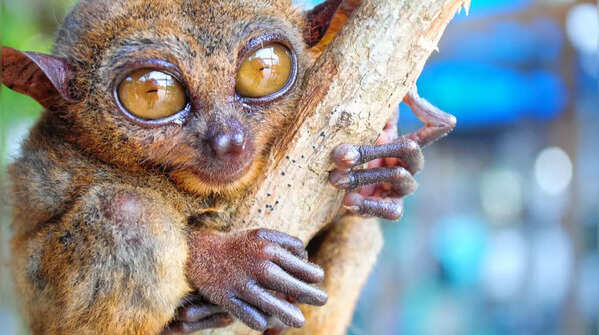8 creatures with the most unique eyes in the world and how they use them

8 creatures with the most unique eyes in the world
When we think about how animals experience the world, one of the first things that comes to mind is their eyes. And for good reason– nature has come up with some truly amazing ways for different species to see. Every animal’s eyes are uniquely built to help them survive in their own environment. While humans have three types of colour receptors to help us see the world, some animals have vision that goes way beyond what we can even imagine. Some can see ultraviolet light, some can detect the tiniest movements from far away, and others can see clearly in total darkness.
In this article, we have curated a list of animals with some of the most fascinating and unusual eyes in the animal kingdom. These animals have special ways of seeing that help them find food, stay safe, and get around. Some can move each eye on its own, while others can look in many directions at the same time. Their eyesight is a significant part of how they survive.

Chameleons
Chameleons are well-known for changing colour, but their eyes also play a key role in their survival. Each eye can move independently, allowing them to look in two different directions at the same time. This gives them a wide field of vision, helping them spot predators and prey. Combined with their ability to blend into their environment, chameleons can stay hidden while keeping a careful watch on everything around them.

Stalk-eyed Flies
The stalk-eyed fly stands out because of its unusual eyes, which sit on long stalks stretching out from its head. These eye stalks aren’t just for appearance– they play an important role in mating. Males with longer stalks are often seen as more attractive by females. The wide-set eyes also help these flies see better, especially when it comes to spotting predators, which helps them stay safe.

Four-eyed Fish
The four-eyed fish, also called Anableps, is a great example of how animals adapt to their surroundings. Each of its eyes is split into two parts– the top half looks above the water, while the bottom half sees below the surface. This clever design helps the fish keep an eye on both what’s happening in the air and in the water, making it easier to spot predators and catch prey from all angles.

Mantis Shrimp
The mantis shrimp is one of the most well-known examples of unique vision in the animal kingdom. With 16 types of color receptors– compared to just three in humans– it can see a much wider range of colors and light, including ultraviolet and polarized light. Each of its eyes sits on a stalk and can move independently, giving it nearly 360-degree vision. This powerful vision helps the mantis shrimp track prey and navigate the colourful coral reefs where it lives.

Tarsiers
Tarsiers are tiny primates from Southeast Asia, best known for their giant eyes, which are so large they take up most of their face. These oversized eyes help them see clearly in the dark forests where they live. While many animals rest at night, tarsiers come alive, using their sharp night vision to hunt. Instead of turning their whole body to look around, they use their highly flexible necks, which can twist 180 degrees in both directions, giving them a wide view of everything around them.

Flounders
Flounders have one of the most unique eye adaptations in the animal kingdom. When they are born, their eyes are on opposite sides of their heads. But as they grow, one eye shifts to the other side, giving them a lopsided look. This eye movement helps them as bottom-dwelling fish, allowing both eyes to stay on the same side of their body. This makes it easier for them to scan the seafloor for predators or prey without having to lift their bodies from the sand.

Ostriches
Ostriches are famous for their size and speed, but their eyesight is also vital to their survival. Their eyes are the largest of any land animal– bigger even than their brains! This size gives them a broad field of vision, which is essential for spotting threats from a distance. With such large eyes, ostriches can notice predators early and use their powerful legs to outrun danger before it gets too close.

Dragonflies
Dragonflies are not just fast, but also expert hunters, thanks to their amazing compound eyes. Each eye is made up of thousands of tiny lenses, giving it nearly 360-degree vision. This wide field of view helps them track and catch prey mid-flight with incredible precision. On top of that, dragonflies can see ultraviolet light, which helps them hunt and find mates more easily.








